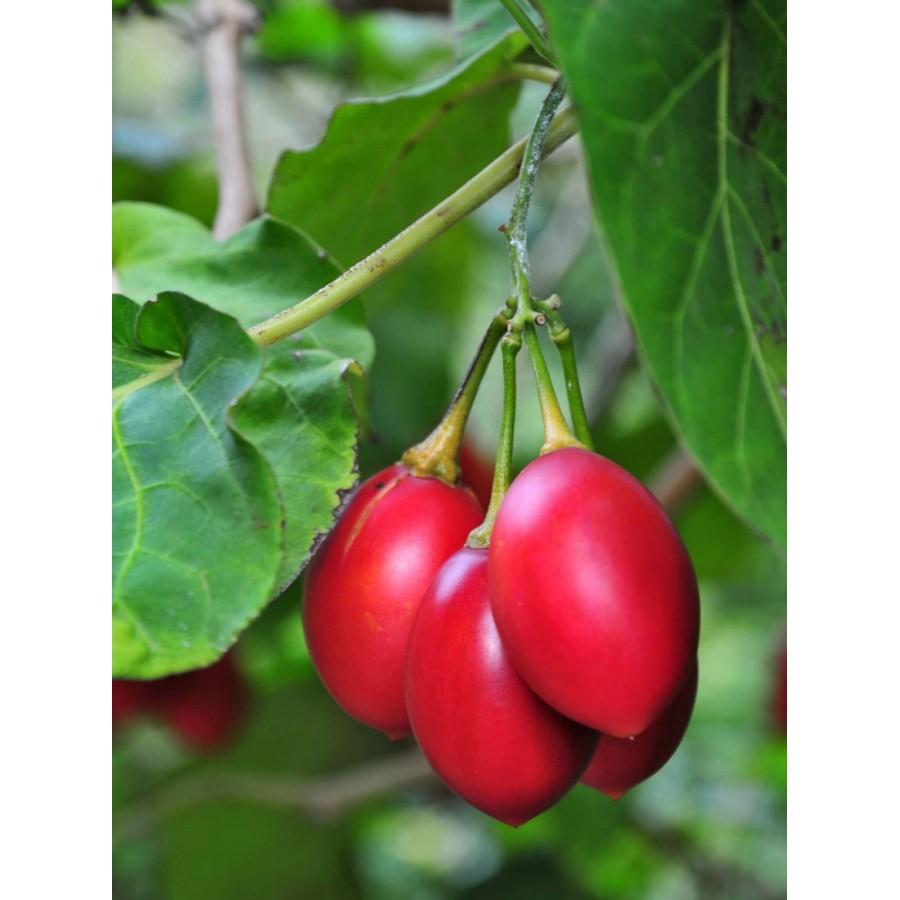Tree Tomato (Tamarillo)
- Product Code: TOFOO316
- Availability: Out Of Stock
* Deliver charges will be applicable.
-
₹280
The tamarillo (Solanum betaceum) is a small tree or shrub in the flowering plant family Solanaceae (the nightshade family). It is best known as the species that bears the tamarillo, an egg-shaped edible fruit.[2] It is also known as the tree tomato,[3] tomate de árbol, tomate andino, tomate serrano, blood fruit, poor man's tomatoe, tomate de yuca, tomate de españa, sachatomate, berenjena, chilto and tamamoro in South America, tyamtar, rambheda or rukh tamatar (lit. tree tomatoes) in Nepal, and terong Belanda (Dutch eggplant) in Indonesia. It is popular globally, especially in Peru, Colombia, New Zealand, Ecuador, Nepal, Rwanda, Burundi, Australia, and Bhutan.
The plant is a fast-growing tree that grows up to 5 metres. Peak production is reached after 4 years and the life expectancy is about 5 to 12 years.The tree usually forms a single upright trunk with lateral branches. The flowers and fruits hang from the lateral branches. The leaves are large, simple and perennial, and have a strong pungent smell. The flowers are pink-white, and form clusters of 10 to 50 flowers. They produce 1 to 6 fruits per cluster. Plants can set fruit without cross-pollination, but the flowers are fragrant and attract insects. Cross-pollination seems to improve fruit set.The roots are shallow and not very pronounced, therefore the plant is not tolerant of drought stress and can be damaged by strong winds. Tamarillos will hybridize with many other solanaceae, though the hybrid fruits will be sterile, and unpalatable in some instances.[citation needed]
The fruits are egg-shaped and about 4-10 centimeters long. Their color varies from yellow and orange to red and almost purple. Sometimes they have dark, longitudinal stripes. Red fruits are more sour, yellow and orange fruits are sweeter. The flesh has a firm texture and contains more and larger seeds than a common tomato.The fruits are very high in vitamins and iron and low in calories (only about 40 calories per fruit).
The flesh of the tamarillo is tangy and variably sweet, with a bold and complex flavor, and may be compared to kiwifruit, tomato, guava, or passion fruit. The skin and the flesh near it have a bitter taste and are not usually eaten raw.

